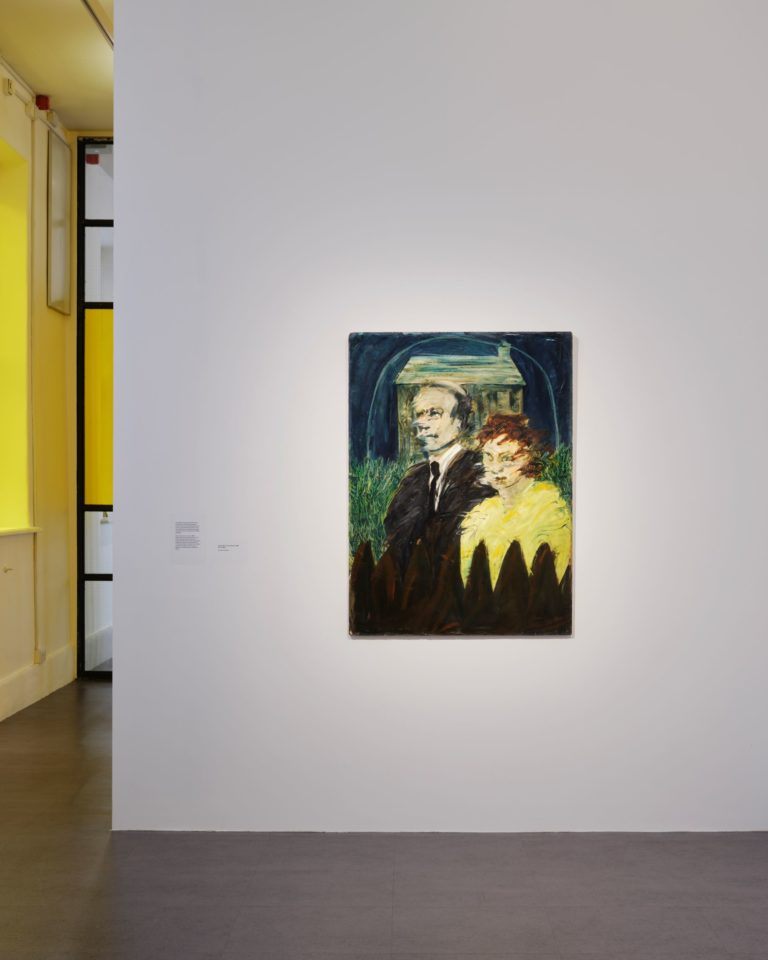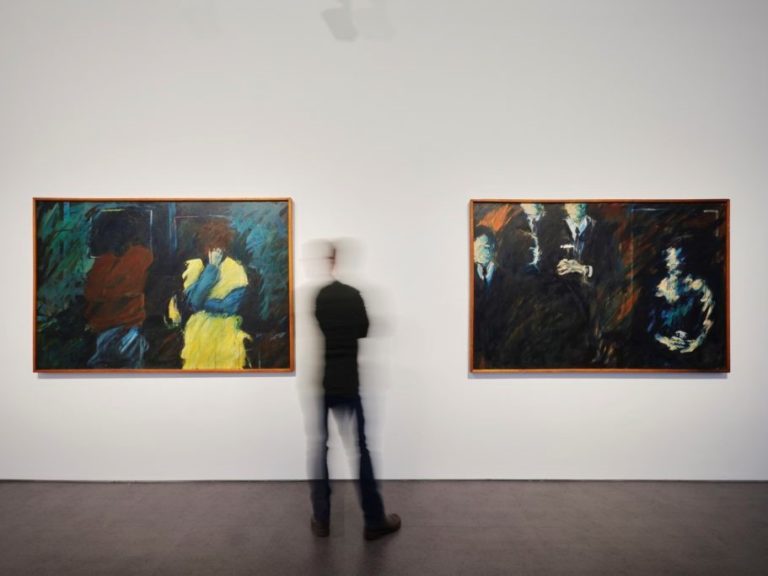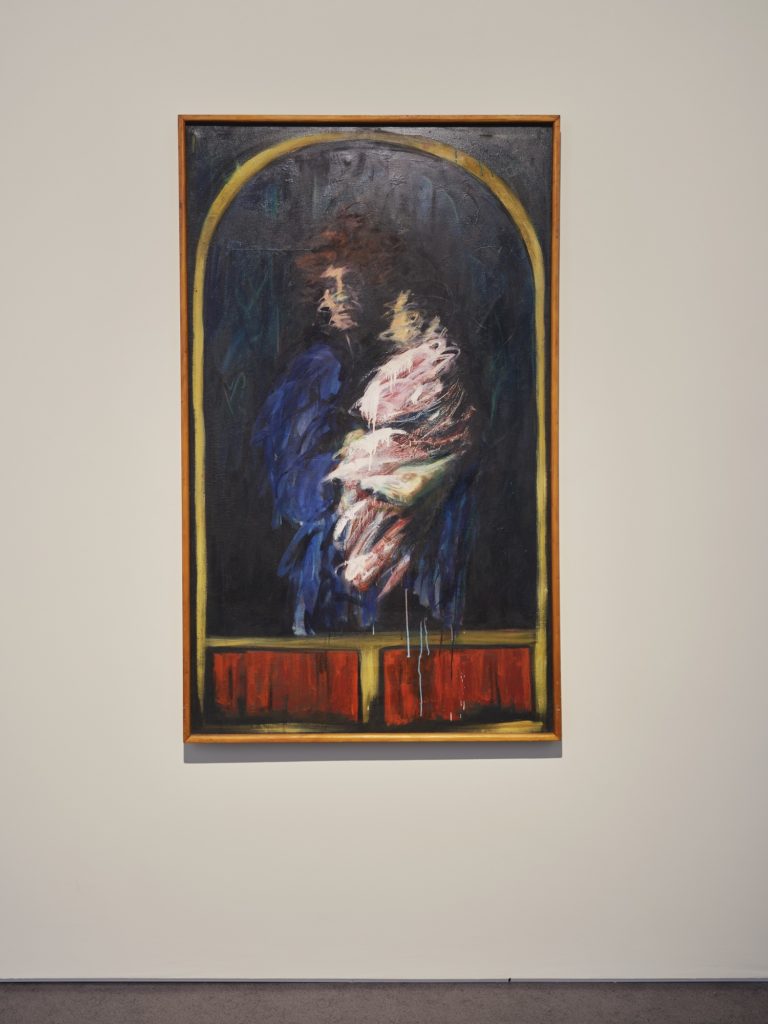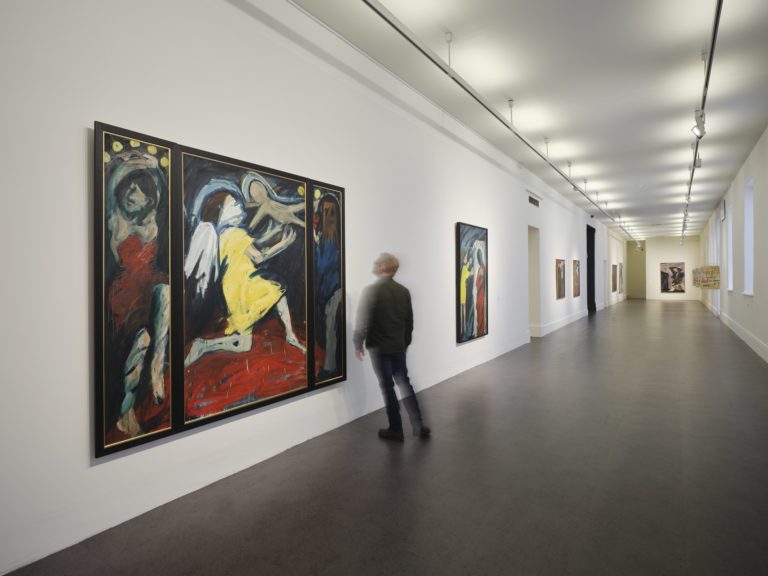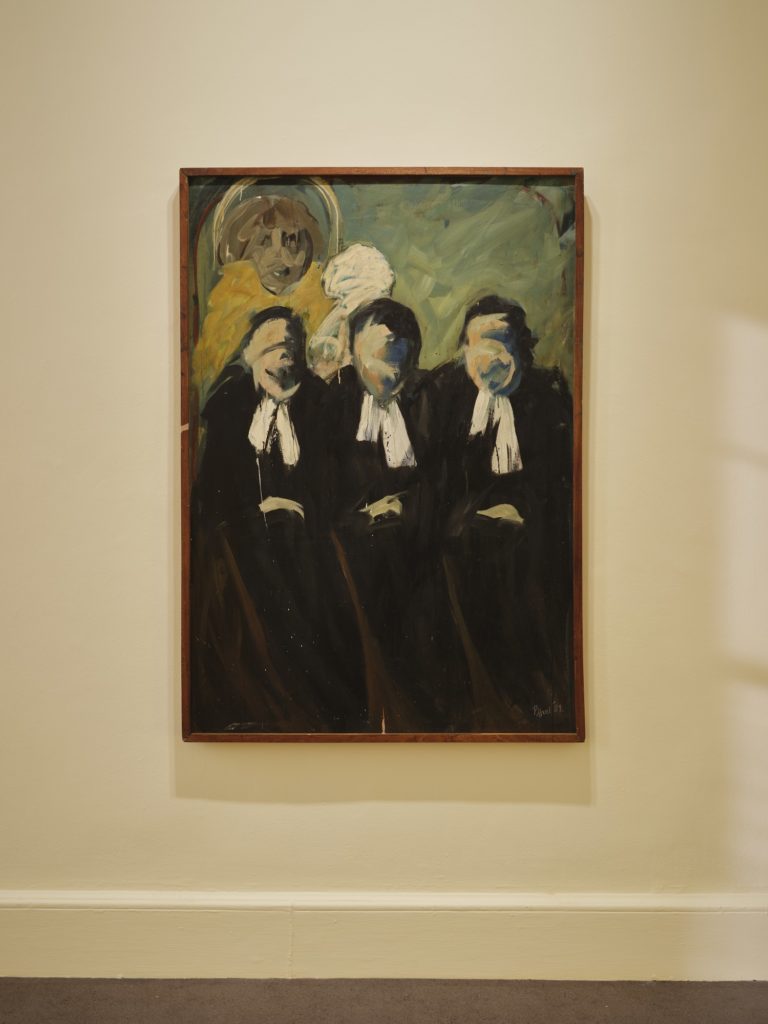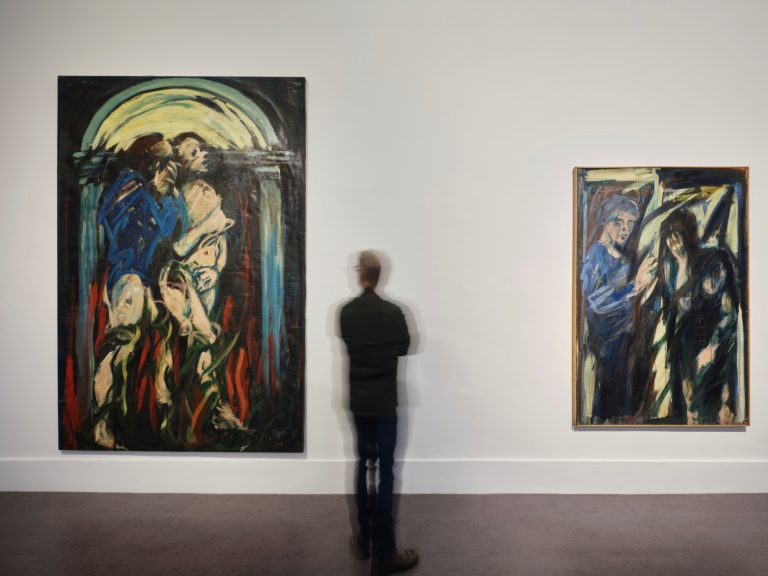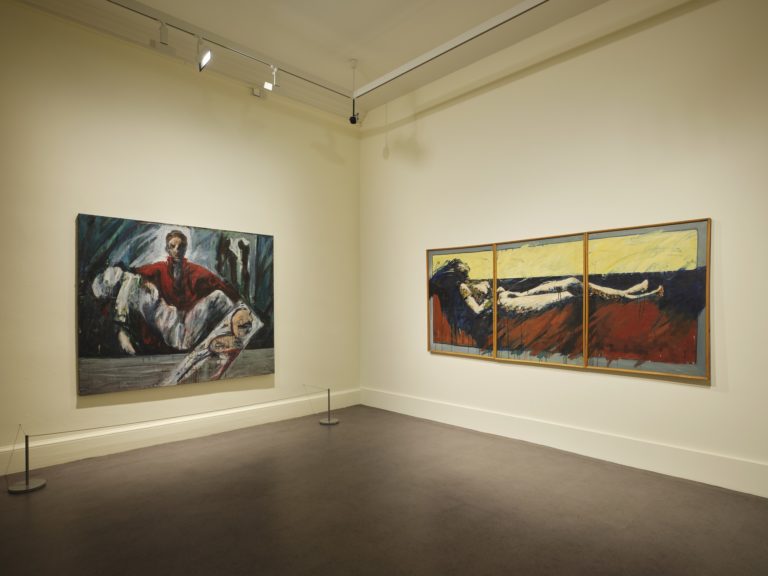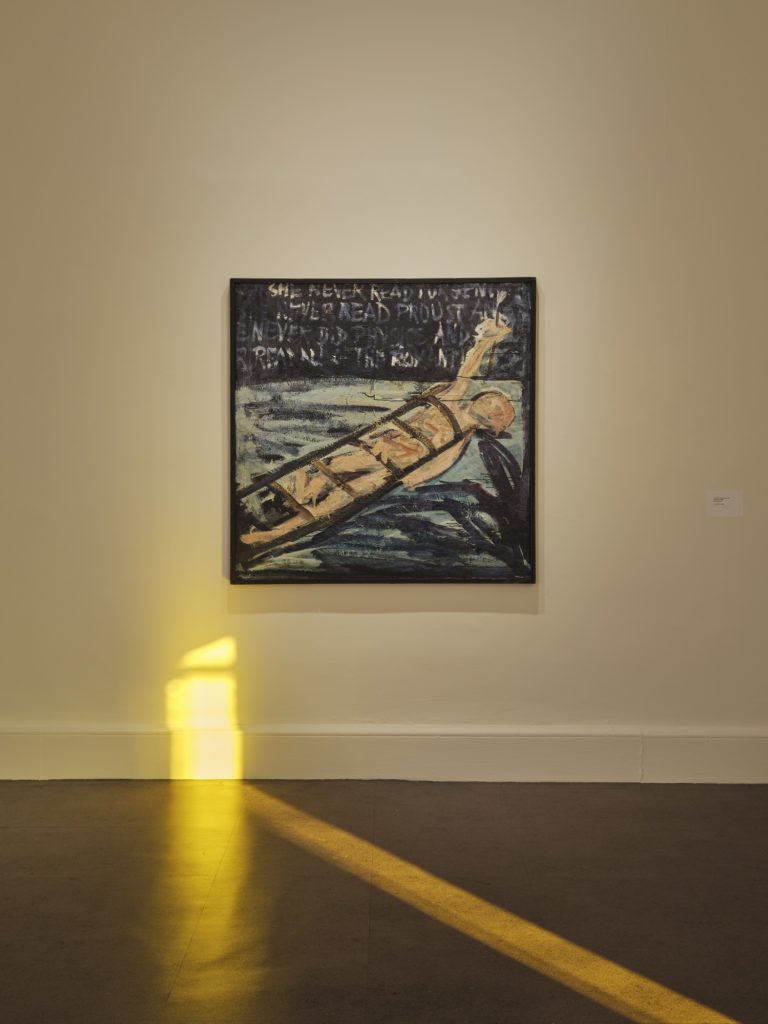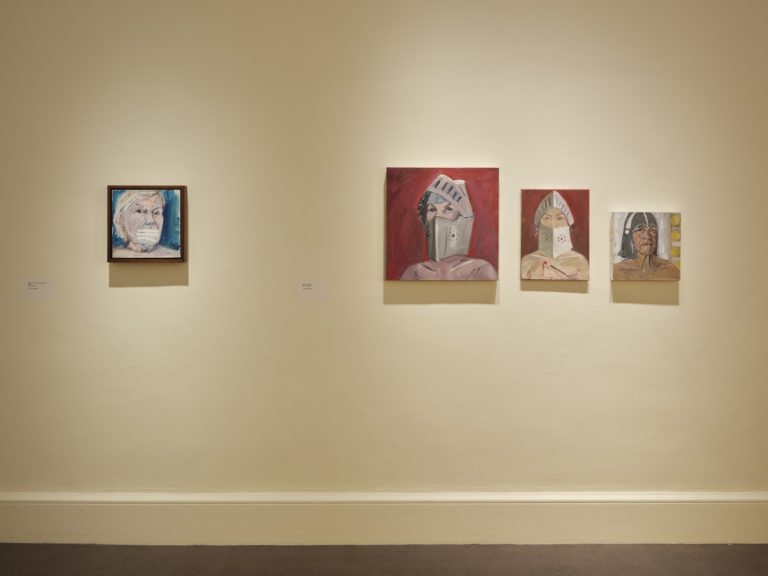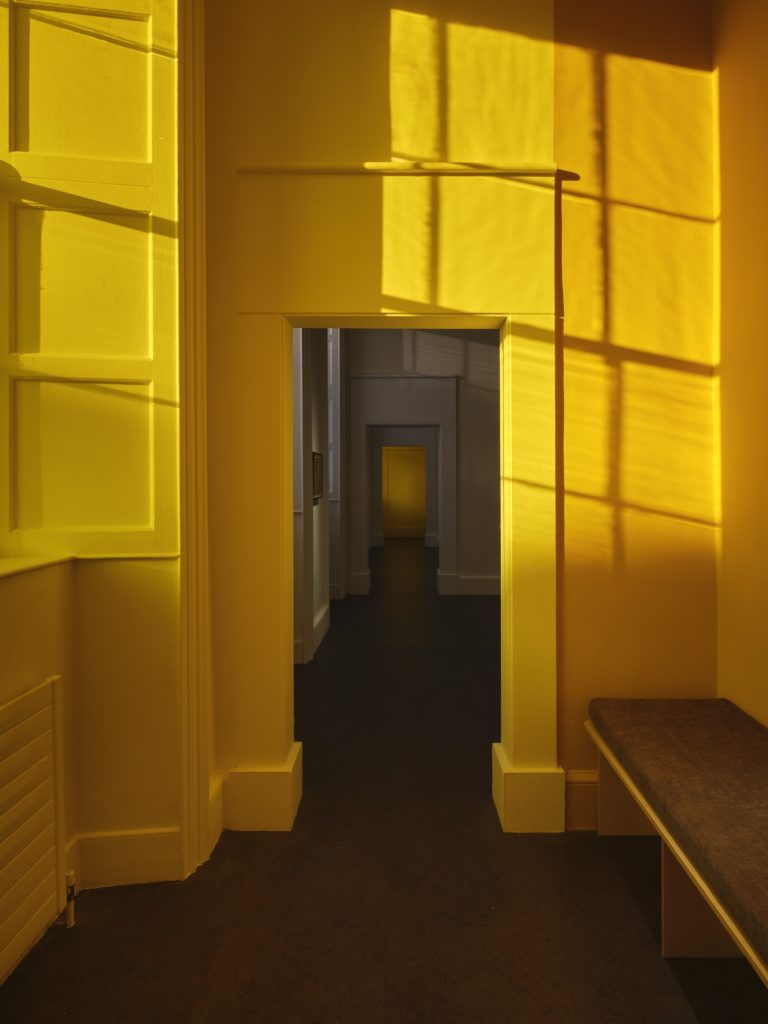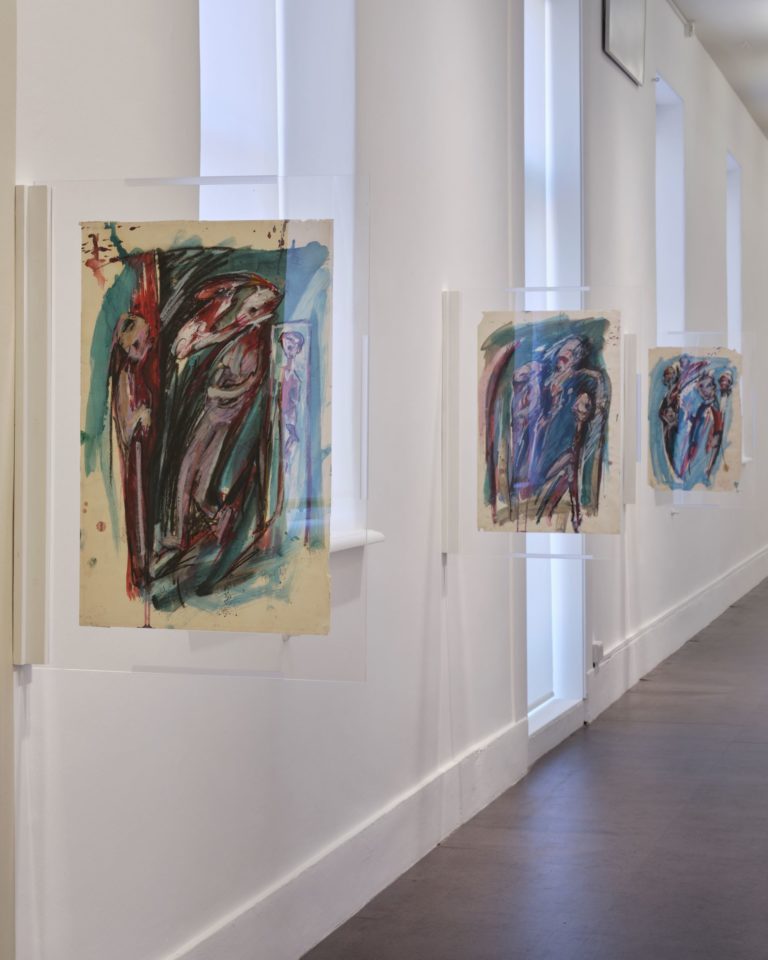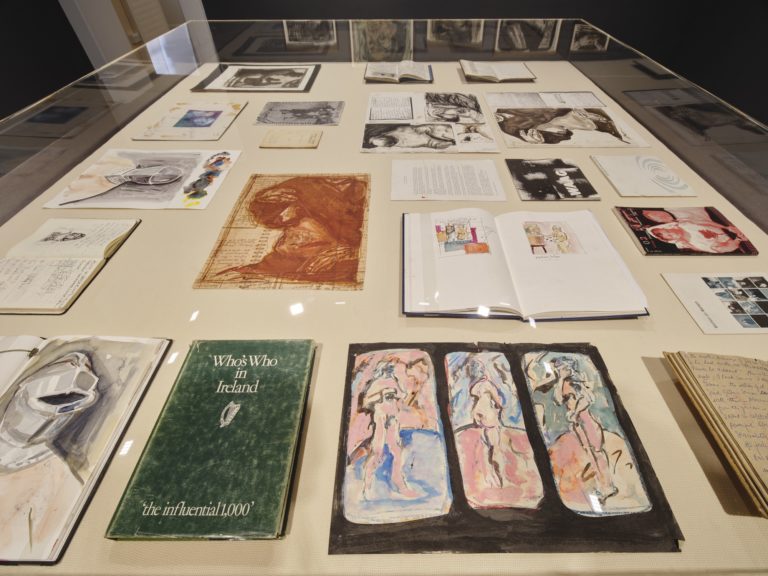Since the 1980s, Patricia Hurl has created work in a range of media that deals with loss, pain, frustration and loneliness. The exhibition features over 70 works mainly drawn from her early paintings in which she exposed the suburban home as less than perfect.
The exhibition demonstrates Hurl’s characteristic use of highly expressionistic and layered brushstrokes that tend to blur distinctions between the figurative and abstraction. This stylistic blend intensifies the visceral qualities and emotion in Hurl’s work in paintings such as The Company Wife (1986) which comprises a group of men in suits gathered as a jovial unit, juxtaposed with the solitary figure of a seated woman. Typically, of Hurl’s early work the faces are obscured, the paint is applied with an urgency that hints at the emotion felt by a woman living in a male dominated society.
While dealing with a range of difficult topics, humour is often deployed. This can come through in the titles of the artworks, as well as in the absurdity of imagery such as Sunday Ritual (1989) depicting an ordinary domestic dining room scene – in closer inspection the viewer realises the mother’s head is protruding from the body of the turkey, the mother is literally being served up for Sunday dinner.
Sketchbooks, diaries, magazines, and newspaper cuttings are central to Hurl’s practice and an integral part of her process, a selection of which is included in the exhibition. The catalyst for the ongoing Warrior series came from media coverage surrounding the treatment of women internationally and closer to home, such as the Belfast rape trial of 2018. Creating helmets as props Hurl set about producing a series of portraits where her face is partially obscured by the helmet, but the eyes convey a tremendous strength. Hurl portrays women as warriors; mothers, sisters, friends are all affected by horrific acts but often powerless to ease the suffering of loved ones.
Smaller in scale than earlier works, paintings such as Warrior XI (2022) present a close view of the head. The close-up view and tight framing are characteristics of Hurl’s recent work, with the protagonist looking directly at the viewer encouraging engagement in a strong though nonaggressive manner. Throughout her career Hurl courageously uses her own body in works such as Forensic Portraiture as a vehicle and site for her political statement, avoiding the need to ask permission, while furthering artistic freedom.
As an older artist her work increasingly deals with issues of isolation and loneliness. She is part of the Na Cailleacha collective of eight older women, which embraces artists from various European destinations and includes a musician, two film-makers and a writer, as well as visual artists.
